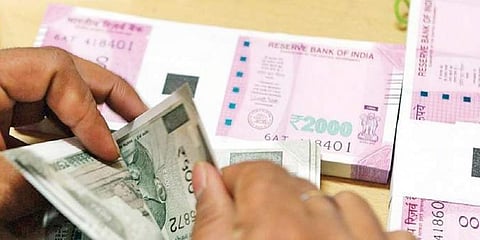

BENGALURU: In the face of gloomy prognosis of the Indian economy by the International Monetary Fund (IMF), the quarterly report by the National Council of Applied Economic Research (NCAER) has forecast a GDP growth of 1.3 per cent. The report has been co-authored by Prof NR Bhanumurthy -- the first vice-chancellor of Bengaluru-based Dr. BR Ambedkar School of Economics (BASE) University. The economist spoke to The New Indidan Express on steps taken by the Reserve Bank of India and government that may help the economy out of the Covid cloud. On Karnataka economy, he said that the impact of the pandemic would be significant, but the state has fiscal space to address the crisis. Excerpts:
Recently, IMF projected the Indian economy to contract by 4.5 per cent in 2020, slowest since 1961. Your comments.
Many international financial institutions, IMF, Organisation for Economic Co-operation & Development among others, have forecast a negative growth for the current year while suggesting a sharp recovery next year. However, in my view, these forecasts do not take the policy measures that India has introduced and hence, their prognosis is largely pessimistic.
To what extent, measures taken by RBI and government, particularly, ‘Atmanirbhar Bharat’, are supposed to boost home productivity and economic activity?
Measures by RBI and Central government are broad-based; some are for short-term, some are structural. Measures that boost demand in the short-term and supply in the medium and long-term should help smoothen the adverse impact. Additionally, there are concerns due to rising tension between India and China. The ‘Atmanirbhar’ slogan is timely, though there are some ambiguities as to what it really means – does it mean import substitution?
What is the impact of Covid on the Karnataka economy?
It could be substantial as Karnataka is integrated significantly with the Indian and global economies in both goods and services sectors. However, unlike many other states, the pre-Covid fiscal situation was not alarming. Even for the current year, the budgeted deficit was about 2.55 per cent with surplus on the revenue account. The state has fiscal space to address the crisis. With some reprioritising of expenditure, the government could allocate more resources to health sector.
The extension of PM Garib Kalyan Yojana till November-end comes a day before the LPG prices were increased. How will pro-poor policies boost consumer confidence when unemployment is on the rise?
Extension of PMGKY was necessitated as the economic activities are yet to pick up, especially in rural areas. The hike in LPG and other fuel prices are largely due to increase in international oil prices and to some extent due to increase in duties and other taxes by central and state governments. Given that the governments are seeing a sharp fall in revenues, this appears to be one easy way to mobilise resources for spending on pro-poor schemes. In my view, when economic activities reach pre-Covid levels, one should look at reduction in tax component of fuel prices.
How many people in the country are below poverty line? Is there a recent survey?
One of the big constraints in the public policy sphere is the lack of robust and comparable data on most important social indicators. I understand that currently, we have the poverty numbers based on 2011-12 National Sample Survey Office survey. This may not be particularly useful for anti-poverty programmes such as PMGKY. Even the Socio-Economic Caste Census data is dated. The way we were caught unawares with respect to migrant workers is an example why we need more statistics on social sector.
The NCAER report has forecast a GDP growth of 1.3 per cent. What are the reasons behind the optimism?
We have used an established macro model, which is in public domain, and introduced the policy initiatives in various scenarios. In the context of ‘Atmanirbhar’ package and measures by RBI, there is no reason for negative growth. One caution here is that all the forecasts are subject to some assumptions.
The increase in public health spending has led to the government not announcing any new schemes for the next five years. What would be the cascading effect of policy ‘paralysis’?
At the moment, the effort is to build a strong health infrastructure and recalibrating the government expenditure towards health. Once we overcome this, I am sure governments would start looking at other public policy issues. Prioritising of expenditures will be key to mitigating further risk on both and health and economy.